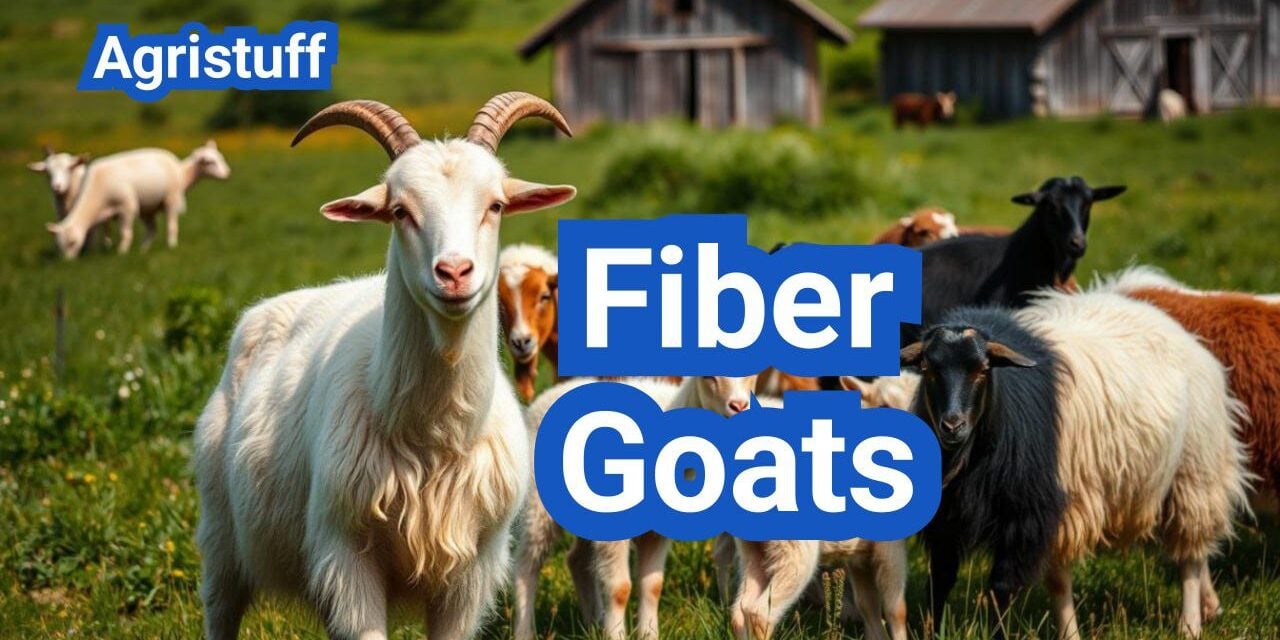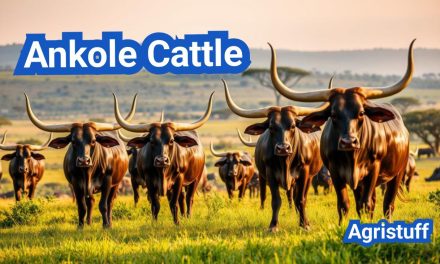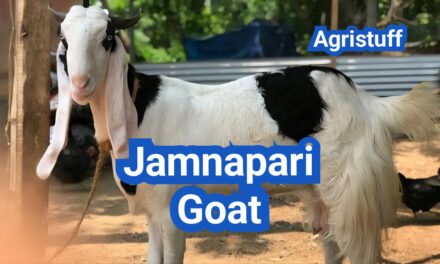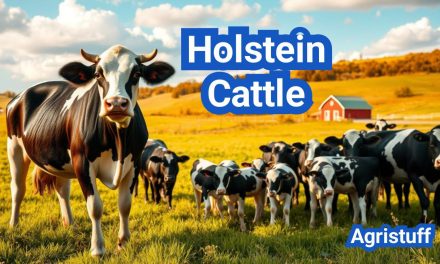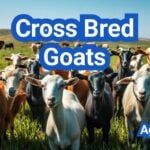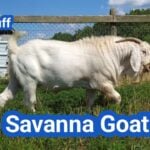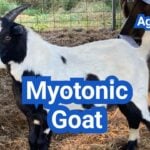Raising fiber-producing goats can be a rewarding experience, providing valuable natural fiber for clothing and textiles.
With various goat breeds available, each with unique characteristics, selecting the right breed for your needs is crucial. Whether you’re a seasoned farmer or just starting out, understanding the benefits and challenges of raising fiber goats is essential.
This comprehensive guide will cover everything you need to know about fiber goats, from the best breeds for fiber production to tips on goat farming and care.
Key Takeaways
- Understanding the benefits of raising fiber-producing goats
- Exploring various breeds suitable for fiber production
- Learning tips for successful goat farming
- Discovering the best practices for caring for fiber goats
- Understanding the importance of fiber production in goat farming
What Are Fiber Goats and Why Raise Them
Fiber goats have become increasingly popular among farmers and crafters due to their unique fiber production. These goats are raised specifically for their fibers, which can be used to create a variety of clothing and textile products. The fibers produced by goats are highly valued for their softness, warmth, and durability.
Defining Characteristics of Fiber Goats
Fiber goats are characterized by their ability to produce high-quality fibers, which can be harvested through shearing. The most common types of fibers produced by goats are mohair from Angora goats and cashmere from Cashmere goats. Pygora goats, a cross between Angora and Pygmy goats, also produce a unique and valuable fiber.
The quality and characteristics of the fiber depend on several factors, including breed, nutrition, and management practices. For instance, Angora goats are known for their mohair, which is lustrous and durable, while Cashmere goats produce a soft undercoat that is highly prized for its warmth and lightness.
| Breed | Fiber Type | Characteristics |
|---|---|---|
| Angora | Mohair | Lustrous, durable, silk-like |
| Cashmere | Cashmere | Soft, warm, lightweight |
| Pygora | Pygora fiber | Soft, fine, versatile |
Economic and Lifestyle Benefits
Raising fiber goats can provide several economic benefits, including the sale of fiber, breeding stock, and value-added products like yarn and clothing. Additionally, fiber goats can contribute to a sustainable lifestyle by providing a source of natural fibers and potentially serving as a form of land management.
The lifestyle benefits of raising fiber goats include the opportunity to engage in sustainable farming practices, connect with nature, and produce something of value. Many farmers and crafters find the process of raising and caring for fiber goats to be rewarding and enjoyable.
Types of Fiber Produced by Goats

The diverse range of fibers produced by goats includes mohair and cashmere, highly valued for their distinct qualities. These fibers are obtained from different breeds of goats, each with its unique characteristics and advantages.
Mohair: The Lustrous Fiber
Mohair is a silk-like fiber obtained from the Angora goat. It is known for its durability, softness, and lustrous appearance. Mohair is resistant to wrinkles and has excellent drape, making it a popular choice for clothing and textiles.
The unique properties of mohair make it suitable for a wide range of applications, from clothing to upholstery. Its ability to hold dye well and its durability contribute to its popularity among textile manufacturers.
Cashmere: The Luxury Undercoat
Cashmere is the fine undercoat fiber obtained from Cashmere goats. It is renowned for its softness, warmth, and lightweight properties. Cashmere is considered a luxury fiber due to its rarity and the high quality of the garments made from it.
The production of cashmere is labor-intensive, as it involves combing or shearing the goats to obtain the fine undercoat. This process, combined with the limited quantity produced per goat, contributes to the high value of cashmere.
Understanding Fiber Micron Count
The micron count of a fiber refers to its diameter, measured in microns. The micron count is a critical factor in determining the quality and feel of the fiber. Generally, the lower the micron count, the softer and finer the fiber.
For goat fibers, the micron count can vary significantly between breeds and types. For instance, cashmere is known for having a low micron count, typically ranging from 14 to 19 microns, while mohair can range from 24 to 40 microns or more, depending on the age of the goat and the specific breed.
Understanding the micron count is essential for determining the appropriate use of the fiber, whether it’s for clothing, textiles, or other applications. It also plays a crucial role in evaluating the quality and value of the fiber.
Popular Fiber Goat Breeds and Their Characteristics
Fiber goat enthusiasts have a range of breeds to choose from, each with unique characteristics and advantages. Whether you’re looking to produce mohair, cashmere, or other types of fiber, understanding the different breeds is crucial for success in fiber goat farming.
Angora Goats: Mohair Specialists
Angora goats are renowned for their mohair production. Mohair is a silk-like fabric known for its durability and luster. These goats require regular grooming to prevent matting and to maintain the quality of their fleece.
- Mohair Production: Angora goats are the primary source of mohair, a valuable commodity in the textile industry.
- Grooming Needs: Regular brushing is essential to prevent the mohair from matting.
Cashmere-Producing Goats
Cashmere goats are prized for their soft undercoat, which is combed out during the spring molting season. Cashmere fiber is highly valued for its warmth, lightness, and softness.
- Cashmere Quality: The quality of cashmere is determined by its color, length, and fineness.
- Combing: Cashmere goats require careful combing to harvest their undercoat without damaging the fiber.
Pygora Goats: Versatile Miniatures
Pygora goats are a cross between Pygmy and Angora goats, bred to produce a smaller goat with a fleece that can be used to create a variety of fiber products. They are known for their friendly disposition and versatility.
- Fiber Types: Pygora goats can produce three types of fleece: Type A (long, fine, and lustrous), Type B (a mix of guard hairs and fine fibers), and Type C (a soft, fine fleece).
- Temperament: Pygora goats are generally friendly and easy to handle, making them suitable for small farms or homesteads.
Nigora Goats: Dual-Purpose Producers
Nigora goats, a cross between Nigerian Dwarf and Angora goats, offer a dual-purpose benefit: they produce high-quality milk and fiber. Their fleece can be used to create a range of textile products.
- Milk Production: Nigora goats are capable of producing a significant amount of milk, making them useful for dairy purposes.
- Fiber Quality: The fiber from Nigora goats is soft and can be used for knitting or weaving.
Each of these breeds offers unique advantages and challenges. By understanding their characteristics, farmers and hobbyists can make informed decisions about which breeds to raise for their fiber production needs.
Selecting the Best Fiber Goats for Your Farm

The journey to establishing a thriving fiber goat farm begins with selecting the best animals. This critical decision sets the foundation for your farm’s success, influencing both the quality of the fiber produced and the overall sustainability of your farming practices.
Assessing Your Climate and Land Resources
Before choosing fiber goats, it’s essential to assess your farm’s climate and land resources. Different breeds have varying levels of tolerance to heat, cold, and humidity. For instance, Angora goats are more sensitive to humidity and require drier conditions, while certain cashmere-producing breeds are more adaptable to colder climates.
Climate Considerations:
- Temperature extremes
- Humidity levels
- Annual rainfall
Similarly, the quality and quantity of your land will impact your choice. Goats require adequate grazing and browsing opportunities, so the type and amount of vegetation on your land are crucial factors.
Evaluating Fiber Quality in Potential Stock
When selecting fiber goats, evaluating the quality of their fiber is paramount. This involves examining the micron count, staple length, and overall condition of the fleece. High-quality fiber not only commands better prices but also reflects the health and well-being of your animals.
| Fiber Characteristic | Ideal Range | Impact on Quality |
|---|---|---|
| Micron Count | 18-24 microns | Lower microns indicate softer fiber |
| Staple Length | 3-5 inches | Longer staples often mean easier harvesting |
| Fleece Condition | Clean, free of matting | Affects overall value and usability |
Finding Reputable Breeders and Auctions
Locating reputable breeders and auctions is vital to acquiring high-quality fiber goats. Researching breed associations, attending farm tours, and participating in fiber festivals can provide valuable insights and connections within the industry.
Tips for Finding Reputable Breeders:
- Check for membership in breed associations
- Ask for references and visit farms
- Review health records and breeding practices
By carefully assessing your farm’s resources, evaluating the quality of potential stock, and sourcing animals from reputable breeders, you can establish a thriving fiber goat farm that produces exceptional fiber.
Essential Setup for Fiber Goat Farming
Setting up a fiber goat farm involves several critical components that ensure the health and productivity of the goats. A well-planned setup is vital for the success of the farm, encompassing land management, appropriate fencing, and adaptations for small-scale operations.
Land Requirements and Management
The land required for fiber goat farming varies depending on the number of goats and the farming practices. Generally, 1-2 acres of grazing land per 5-10 goats is considered sufficient, depending on the quality of the pasture.
Effective land management involves rotational grazing to maintain pasture health and prevent overgrazing. This practice not only ensures the sustainability of the land but also contributes to the quality of the fiber produced.
| Land Use | Goat Capacity | Management Practice |
|---|---|---|
| Grazing | 5-10 goats per acre | Rotational grazing |
| Browse | 2-5 goats per acre | Managed browsing |
Fencing and Predator Protection
Fencing is a critical aspect of fiber goat farming, serving both to contain the goats and protect them from predators. High-tensile fencing at least 5 feet high is recommended, with the addition of electric fencing for enhanced security.
Predator protection measures include guard animals such as dogs or donkeys, which can deter predators like coyotes and foxes. The choice of guard animal depends on the farm’s specific needs and the types of predators present.
Small Farm Adaptations
For small farms, adapting fiber goat farming practices to the available land and resources is crucial. This may involve intensive grazing management and utilizing smaller, more manageable fencing systems.
Small-scale fiber goat farmers can also benefit from integrating their goats into existing farm systems, such as orchard grazing or agroforestry, to maximize land use efficiency.
Housing and Shelter Requirements for Fiber Goats
The housing needs of fiber goats are critical for maintaining their fiber quality and overall health. Adequate shelter protects them from extreme weather conditions, predators, and diseases, ensuring they remain healthy and productive.
Basic Shelter Designs
Basic shelter for fiber goats can range from simple three-sided structures to more complex barns, depending on the climate and available resources. The key is to provide protection from wind, rain, and sun exposure. Ventilation is crucial to prevent moisture buildup, which can lead to health issues.
A well-designed shelter should also consider the ease of cleaning and maintenance. This includes features like concrete floors or gravel that can be easily cleaned, and a design that allows for good airflow without being drafty.
Special Considerations for Fiber Protection
For fiber goats, the quality of their fleece is paramount. Therefore, shelter designs should also consider fiber protection. This means minimizing the risk of contamination from dirt, debris, and moisture, which can degrade fiber quality.
Using bedding materials like straw or sand can help keep the goats clean and dry, thereby protecting their fleece. Regular cleaning of the shelter is also essential to prevent the buildup of harmful substances.
Seasonal Housing Adjustments
Different seasons bring different challenges for fiber goat housing. In colder climates, additional insulation and wind protection may be necessary during winter. Conversely, in hotter climates, shelters should be designed to provide shade and ventilation to keep goats cool.
Seasonal adjustments might also include changing bedding materials or increasing the frequency of shelter cleaning to accommodate changing weather conditions and goat needs.
Nutrition Management for Quality Fiber Production
Fiber goats require a well-balanced diet to optimize their fiber production. Proper nutrition is crucial for maintaining the health of the goats and the quality of their fiber.
Basic Dietary Requirements
Fiber goats need a diet rich in nutrients to support their overall health and fiber production. The basic dietary requirements include high-quality hay, adequate protein, and essential minerals.
- High-Quality Hay: Providing good quality hay is fundamental. It should be free from mold and have a high nutritional value.
- Adequate Protein: Protein is crucial for fiber production. Goats require a diet that includes sufficient protein to support the growth and maintenance of their fiber.
- Essential Minerals: Minerals such as copper, zinc, and selenium are important for the overall health of goats and the quality of their fiber.
Supplements That Enhance Fiber Quality
In addition to their basic dietary requirements, fiber goats may benefit from supplements that enhance fiber quality. These can include specific nutrients that promote healthy fiber growth.
- Omega-3 Fatty Acids: These can improve the quality and strength of the fiber.
- Vitamins and Minerals: Ensuring adequate levels of vitamins and minerals, especially those that are known to impact fiber quality, can be beneficial.
Seasonal Feeding Adjustments
The nutritional needs of fiber goats can vary with the seasons. Adjusting their diet according to the season can help maintain optimal fiber production.
- Winter: In colder months, goats may require more energy-rich foods to maintain their body heat and support fiber production.
- Summer: During warmer months, ensuring access to fresh water and adjusting the diet to prevent heat stress is crucial.
By managing the nutrition of fiber goats effectively, farmers can significantly improve the quality of the fiber produced, leading to better economic returns.
Health Care for Fiber Goats

The health and productivity of fiber goats depend significantly on proper health care practices. Ensuring their well-being is crucial not only for the quality of the fiber they produce but also for their overall health and longevity.
Common Health Issues in Fiber Breeds
Fiber goats are prone to various health issues, including parasites, respiratory infections, and nutritional deficiencies. Parasites are a significant concern as they can lead to reduced fiber quality and overall health deterioration.
Some common parasites affecting fiber goats include:
- Internal parasites like worms
- External parasites such as lice and ticks
Regular monitoring and timely intervention are key to managing these issues effectively.
Preventative Health Protocols
Implementing preventative health protocols is essential for maintaining the health of fiber goats. This includes:
- Regular vaccinations
- Parasite control measures
- Nutritional management
A well-planned health program can significantly reduce the incidence of diseases and improve the overall health of the goats.
| Health Protocol | Frequency | Benefits |
|---|---|---|
| Parasite Control | Monthly | Reduces parasite load, improving overall health |
| Vaccinations | Quarterly | Protects against common diseases |
| Nutritional Management | Ongoing | Ensures optimal nutrition for fiber production and overall health |
Finding Veterinarians Experienced with Fiber Goats
Having access to a veterinarian experienced in caring for fiber goats is vital. They can provide guidance on health issues specific to fiber breeds and help in developing effective health care strategies.
When searching for a veterinarian, consider their experience with goats, their understanding of fiber goat health issues, and their ability to provide emergency care.
Grooming and Maintaining Fiber Goats

Maintaining the health and quality of fiber goats’ fleece requires regular grooming practices. Grooming is not just about keeping the goats clean; it’s a critical aspect of their overall health and the quality of their fiber.
Regular Grooming Practices
Regular grooming involves several key practices. First, brushing is essential to prevent matting and tangling of the fiber. This should be done gently but thoroughly to ensure the goat’s comfort and to maintain the integrity of the fleece.
Another important aspect is inspecting the goats regularly for signs of dirt, matting, or parasites. Early detection of issues can prevent more serious problems from developing.
Fiber Management Between Shearings
Managing the fiber between shearings is crucial for maintaining its quality. This includes ensuring the goats have a clean environment to reduce the risk of the fleece getting dirty or matted.
| Management Practice | Benefits |
|---|---|
| Regular Brushing | Prevents matting, reduces risk of parasites |
| Clean Living Conditions | Reduces fleece contamination |
| Monitoring for Parasites | Early detection and treatment of parasite infestations |
Special Care for Show Animals
Goats being raised for show require additional grooming to ensure they look their best. This includes more frequent brushing and potentially using specific grooming products to enhance the appearance of their fleece.
Show animals also benefit from being handled regularly to become comfortable with human interaction, which can reduce stress during shows.
Harvesting Fiber from Your Goats
Shearing is a critical step in fiber goat farming that directly impacts the quality of the fiber produced. It requires careful planning, the right equipment, and a gentle touch to ensure the well-being of the goats and the quality of the fiber.
Shearing Equipment and Setup
To shear your goats effectively, you’ll need the right equipment. This includes:
- High-quality shears designed for fiber goats
- Combs and cutters suitable for the type of fiber you’re harvesting
- A clean, well-lit workspace
- Restraint equipment to ensure the goat’s safety and comfort
Investing in the right tools is crucial for a successful shearing process. It’s also important to maintain your equipment to ensure it remains in good working condition.
Step-by-Step Shearing Process
The shearing process involves several key steps:
- Prepare your goat by ensuring it’s clean and dry
- Restrain the goat securely but gently
- Begin shearing, working in small sections to avoid cutting the skin
- Use slow, deliberate strokes to remove the fiber
- Work around the goat’s body, taking care around sensitive areas
It’s essential to be patient and move slowly to avoid stressing the goat or causing injury.
Post-Shearing Care
After shearing, it’s crucial to provide proper care to your goats:
- Inspect the goat for any cuts or abrasions
- Provide a clean, dry environment to prevent chilling or infection
- Monitor the goat’s behavior and health closely in the days following shearing
Proper post-shearing care is vital for maintaining the health and well-being of your goats.
Collecting and Sorting Fiber
Once the fiber is sheared, it’s time to collect and sort it:
- Gather the sheared fiber into a clean container
- Sort the fiber into different grades based on quality and color
- Remove any contaminants or second-grade fibers
Careful sorting is key to maximizing the value of your harvested fiber.
By following these steps and tips, you can ensure a successful fiber harvesting process that benefits both you and your goats.
Processing and Utilizing Goat Fiber

To unlock the full potential of your goat fiber, understanding the processing techniques is essential. Processing goat fiber involves several steps that transform raw fiber into usable products. Whether you’re hand spinning or using commercial processing options, each step is crucial for producing high-quality yarn.
Cleaning Raw Fiber
The first step in processing goat fiber is cleaning the raw material. This involves removing dirt, debris, and any vegetable matter that may have accumulated during shearing. Proper cleaning ensures that the fiber is free from contaminants, which can affect the quality of the final product.
To clean raw fiber, you can use a series of gentle washing steps, often involving mild detergents and warm water. It’s essential to handle the fiber gently to avoid matting or felting.
Carding and Combing Techniques
After cleaning, the next steps are carding and combing. Carding aligns the fibers in the same direction, producing a rope-like strand called a sliver. This process can be done by hand using hand cards or with a drum carder for larger quantities.
Combing, on the other hand, is a more precise process that removes shorter fibers and aligns the remaining fibers into a smooth, parallel arrangement. This step is particularly important for producing high-quality yarn.
| Technique | Purpose | Tools Used |
|---|---|---|
| Carding | Aligns fibers, removes tangles | Hand cards, drum carder |
| Combing | Removes short fibers, aligns fibers precisely | Fiber combs |
Hand Spinning Goat Fibers
Hand spinning is a traditional technique that involves drafting and twisting the prepared fibers into yarn. This process allows for a high degree of control over the yarn’s texture, weight, and twist.
To hand spin goat fibers, you’ll need a spinning wheel or spindle. The quality of the yarn depends on the preparation of the fibers, the drafting technique, and the amount of twist applied.
Commercial Processing Options
For those who prefer not to process their goat fiber themselves, commercial processing options are available. Many mills and fiber processing services offer carding, combing, and spinning services.
When selecting a commercial processor, consider their experience with goat fiber, the quality of their equipment, and their reputation for producing high-quality products.
By understanding the various processing techniques and options available, you can unlock the full potential of your goat fiber, creating beautiful and valuable textile products.
Raising Fiber Goats for Profit

To successfully raise fiber goats for profit, it’s crucial to understand the intricacies of the fiber market. The demand for high-quality fiber products is on the rise, driven by consumers seeking sustainable and natural materials. This trend presents an opportunity for farmers to capitalize on the growing market.
Understanding the Fiber Market
The fiber market is diverse, with various segments including hand spinners, textile mills, and crafters. Understanding the specific needs and preferences of these segments is key to marketing your fiber products effectively. Researching market trends and prices will help you make informed decisions about your production.
For instance, knowing the current price per pound for different types of fiber, such as mohair or cashmere, will allow you to calculate your potential revenue. Additionally, being aware of the demand for specific fiber characteristics, like color or micron count, can help you tailor your breeding and management practices.
Calculating Costs and Potential Returns
To determine the profitability of your fiber goat operation, you need to calculate both the costs and potential returns. Costs include feed, veterinary care, fencing, and equipment for shearing and processing fiber. Potential returns can come from selling raw fiber, value-added products like yarn or hats, and even breeding stock.
Creating a detailed budget and financial projections will help you understand the viability of your business. Consider factors like the size of your operation, the breed of goats, and the quality of fiber you’re producing.
Diversifying Income Streams
Diversification is a key strategy for maximizing profit in fiber goat farming. In addition to selling raw fiber, you can create value-added products like spun yarn, knitted or woven items, or felted goods. Selling breeding stock or offering agritourism activities can also provide additional income streams.
By diversifying your products and services, you can reduce your dependence on a single market and increase your resilience to market fluctuations.
Marketing Strategies for Fiber Products
Effective marketing is crucial for selling your fiber products at a profit. Utilize online platforms like social media and e-commerce sites to reach a wider audience. Participating in fiber festivals, craft fairs, and local markets can also help you connect with potential customers.
Developing a brand identity that reflects the quality and uniqueness of your products can help you stand out in a competitive market. Consider creating a website or blog to share your story and showcase your products.
Sustainable Fiber Goat Farming Practices

Sustainable fiber goat farming is not just about producing high-quality fiber, but also about adopting practices that minimize environmental impact. As farmers and consumers become more environmentally conscious, the need for sustainable practices in fiber goat farming has become increasingly important.
Environmental Considerations
Environmental considerations play a crucial role in sustainable fiber goat farming. This includes managing land resources effectively to prevent overgrazing, which can lead to soil erosion and loss of biodiversity. Farmers can achieve this by implementing rotational grazing practices, allowing pastures to recover and maintaining soil health.
Key environmental considerations include:
- Managing water resources efficiently
- Reducing waste through proper manure management
- Maintaining biodiversity by preserving native vegetation
Ethical Fiber Production Standards
Ethical fiber production standards are essential for ensuring that fiber goat farming is not only sustainable but also humane. This involves providing goats with adequate living conditions, proper nutrition, and regular health checks. Ethical farming practices also extend to the harvesting and processing of fiber, ensuring that it is done in a way that minimizes stress on the animals.
Best practices for ethical fiber production include:
- Providing spacious and clean living conditions for goats
- Ensuring regular veterinary care
- Using humane methods for handling and shearing goats
Regenerative Farming with Fiber Goats
Regenerative farming with fiber goats involves practices that not only minimize environmental impact but also enhance the overall health of the farm ecosystem. This can be achieved through regenerative agriculture techniques such as holistic grazing management, which can improve soil carbon sequestration and biodiversity.
| Regenerative Practice | Benefit |
|---|---|
| Holistic Grazing Management | Improves soil health and biodiversity |
| Cover Cropping | Enhances soil fertility and structure |
| Manure Management | Reduces waste and provides natural fertilizer |
By adopting sustainable fiber goat farming practices, farmers can contribute to a more environmentally friendly and ethical fiber industry. This not only benefits the environment but also enhances the quality and value of the fiber produced.
Joining the Fiber Goat Community
The fiber goat community is a vibrant network of breeders, artisans, and enthusiasts who share a passion for high-quality fibers. This community provides a supportive environment where individuals can learn, share knowledge, and showcase their products.
Breed Associations and Organizations
Breed associations play a crucial role in the fiber goat community by promoting specific breeds, maintaining breed standards, and providing resources for breeders. For example, the Angora Goat Breeders Association is dedicated to the promotion and improvement of Angora goats, offering a wealth of information on breed history, breeding practices, and fiber production.
Joining a breed association can be beneficial for both new and experienced breeders, offering opportunities for networking, education, and access to a community of like-minded individuals.
Fiber Festivals and Shows
Fiber festivals and shows are exciting events that celebrate the artistry and craftsmanship associated with fiber production. These events provide a platform for producers to showcase their fibers, garments, and crafts, while also offering workshops and seminars on various aspects of fiber production and processing.
Attending fiber festivals and shows can be a great way to learn about the latest trends, techniques, and technologies in the industry, as well as to connect with other enthusiasts and professionals.
Online Resources and Support Groups
The internet has made it easier than ever to connect with the fiber goat community through online resources and support groups. Websites, forums, and social media groups dedicated to fiber goats provide a space for individuals to ask questions, share experiences, and access a wealth of information on topics ranging from breeding and nutrition to fiber processing and marketing.
Participating in online forums can be particularly helpful for those who are new to fiber goat farming, as well as for those looking to expand their knowledge or solve specific problems.
By engaging with the fiber goat community through breed associations, fiber festivals, and online resources, individuals can enhance their knowledge, improve their practices, and contribute to the vibrant culture surrounding fiber goat farming.
The Rewarding Journey of Raising Fiber Goats
Raising fiber goats can be a highly rewarding experience, offering numerous benefits for farmers and hobbyists alike. The journey into goat farming not only provides an opportunity to produce valuable fibers like mohair and cashmere but also contributes to a sustainable and regenerative farming practice.
The benefits of fiber goats extend beyond their luxurious fibers. They offer a unique chance to connect with nature, promote biodiversity, and engage in a fulfilling agricultural pursuit. By understanding the characteristics of different fiber goat breeds, managing their health and nutrition, and harvesting their fiber, individuals can embark on a successful goat farming venture.
As the demand for natural, sustainable fibers continues to grow, raising fiber goats presents a promising opportunity for those looking to diversify their agricultural endeavors. Whether for personal use or as a business venture, the world of fiber goats invites exploration and discovery, promising a rich and rewarding experience for all involved in goat farming.
FAQ
What is a fiber breed goat?
A fiber breed goat is a type of goat that is raised for its fiber, such as mohair, cashmere, or other types of fleece. These goats are bred specifically for their high-quality fiber, which is used to create clothing, textiles, and other products.
What are goat fibers used for?
Goat fibers are used for a variety of purposes, including making clothing, hats, scarves, and other textiles. They are also used for crafting, felting, and other creative projects.
What are the best fiber goat breeds?
Some of the most popular fiber goat breeds include Angora goats, Cashmere goats, Pygora goats, and Nigora goats. Each breed has its own unique characteristics and produces different types of fiber.
How do I get started with my fiber goat herd?
To get started with your fiber goat herd, you’ll need to research different breeds, assess your climate and land resources, and find reputable breeders. You’ll also need to consider fencing, shelter, and nutrition management.
Can you make money with fiber goats?
Yes, it is possible to make money with fiber goats by selling their fiber, breeding stock, or value-added products. However, it requires a significant investment of time, money, and effort.
What are the different types of fibers produced by goats?
Goats produce a variety of fibers, including mohair, cashmere, and other types of fleece. Each type of fiber has its own unique characteristics and uses.
How do I care for my fiber goats?
To care for your fiber goats, you’ll need to provide regular grooming, nutrition management, and health care. This includes shearing, vaccinations, and parasite control.
How often should I shear my fiber goats?
The frequency of shearing depends on the breed and type of fiber. Generally, fiber goats are sheared once or twice a year, depending on the climate and growth rate of their fleece.
What is the micron count of goat fiber?
The micron count of goat fiber refers to the diameter of the fibers, which can range from fine (less than 18 microns) to coarse (over 30 microns). The micron count affects the softness, warmth, and durability of the fiber.
Can I raise dairy or meat goats as fiber goats?
While it is possible to raise dairy or meat goats for fiber, they are not typically bred for this purpose. Fiber goats are bred specifically for their high-quality fiber, and dairy or meat goats may not produce the same quality or quantity of fiber.
How do I process and utilize goat fiber?
To process and utilize goat fiber, you’ll need to clean, card, and spin the fleece. You can then use the yarn to create clothing, textiles, or other products.
What are some sustainable practices in fiber goat farming?
Sustainable practices in fiber goat farming include regenerative farming, rotational grazing, and minimizing waste. These practices can help to improve soil health, biodiversity, and the overall sustainability of the farm.
How can I join the fiber goat community?
You can join the fiber goat community by attending fiber festivals, joining breed associations, and connecting with other fiber goat breeders online. This can provide valuable resources, support, and networking opportunities.
What is the pygora goat breed?
The Pygora goat breed is a cross between a Pygmy goat and an Angora goat, known for its soft, fine fleece and compact size. Pygora goats are often used for small-scale fiber production.
How much does a pygora goat cost?
The cost of a Pygora goat can vary depending on factors such as breeding, quality, and location. On average, you can expect to pay between $200 to $1,000 or more per animal.
Conclusion of: Fiber Goats Breed
Introduction to Fiber Goats
Fiber Goats are a unique category of goats raised primarily for their luxurious fleeces rather than for meat or milk, and these Fiber Goats have become increasingly popular with small farmers, homesteaders, and fiber artists in the USA. As interest in natural, sustainable textiles grows, Fiber Goats give producers a way to transform pasture and brush into high-value fiber that can be sold as raw fleeces, roving, yarn, or finished garments. For new and experienced livestock owners alike, Fiber Goats offer a blend of beauty, practicality, and income potential that is very different from traditional meat or dairy herds. Extension resources on Fiber Goats and goat production.
Because Fiber Goats can thrive on marginal land and browse that many other livestock ignore, Fiber Goats are well suited to diversified farms that want to make the most of every acre. These Fiber Goats can help control brush, support regenerative grazing systems, and provide a story-rich product that appeals to customers who care about where their clothing and yarn come from. When managed carefully, Fiber Goats can fit naturally into existing farm enterprises and contribute to both ecological health and farm profitability. Oregon State University Extension information on goats and small ruminants.
What Are Fiber Goats?
In simple terms, Fiber Goats are goats selectively bred and managed for the quality and quantity of their fleece, and these Fiber Goats produce fibers such as mohair and cashmere that are prized in the textile industry. Unlike goats bred mainly for milk or meat, Fiber Goats are evaluated on traits like fiber fineness, length, luster, and fleece consistency from head to tail. Many Fiber Goats have a dual coat consisting of a soft undercoat, which becomes the valuable fiber, and a coarser outer layer or guard hair that is removed during processing. Sheep and Goat management information for Fiber Goats producers.
Within this category, Fiber Goats can include well-known breeds such as Angora goats, which produce mohair, and crossbred or selected lines that yield high-quality cashmere. There are also newer composite types of Fiber Goats like Pygora and Nigora that blend fiber traits with compact size or good milk production. In all cases, Fiber Goats are defined less by a strictly fixed breed standard and more by the ability of each goat to grow valuable, spinnable fiber that meets the demands of hand-spinners, mills, and fiber artists. Oklahoma State livestock breed resources for goats and Fiber Goats.
Why Fiber Goats Matter for Sustainable Natural Fiber
Fiber Goats matter because they help supply the growing demand for renewable, biodegradable fibers at a time when synthetic materials dominate global textile production, and Fiber Goats do this while grazing on land that might not be suitable for cropping. Natural fiber from Fiber Goats breaks down at the end of its life cycle, unlike many synthetic fibers that contribute to microplastic pollution in waterways and soils. As brands and consumers in the USA pay more attention to environmental impact, Fiber Goats are positioned as a compelling part of the sustainable fashion and slow-textile movement. FAO resources on sustainable livestock and fiber systems.
Because Fiber Goats can be raised on small acreages and integrated with other enterprises, they allow small farms to capture more value per acre while supporting soil health and biodiversity. Many rotational grazing systems use Fiber Goats alongside sheep or cattle to manage weeds and brush that other species avoid, and the Fiber Goats leave behind manure that feeds soil organisms and improves structure. This ability of Fiber Goats to combine ecological benefits with premium niche products makes them an attractive option for farmers looking to align their businesses with sustainability goals. ATTRA sustainable agriculture information relevant to Fiber Goats.
Major Fiber Goat Breeds and Types
One of the most recognizable types of Fiber Goats is the Angora goat, a breed that produces the shiny, curly fiber known as mohair and has become a symbol of high-end fabrics. These Angora Fiber Goats originated in Turkey but are now raised in several US states, historically including Texas and parts of the Southwest, where their fleeces can grow well in semi-arid conditions. Angora Fiber Goats are usually shorn twice a year and can produce several pounds of mohair annually, making them a strong choice for farmers who want consistent, marketable fleeces. University of Minnesota Extension goat and Fiber Goats information.
Cashmere Fiber Goats are a bit different, because the term “cashmere” refers to the fiber type rather than a specific breed, and many types of goats can produce some level of cashmere undercoat. Cashmere Fiber Goats are selected for an extremely fine, soft undercoat with a specific micron range, and producers cull any animals whose fleeces are too coarse or too short. These Fiber Goats shed their down in late winter or early spring, and many farmers comb the Fiber Goats during this period to harvest the cashmere rather than shearing. Merck Veterinary Manual information on goat breeds and Fiber Goats health.
Newer composite breeds of Fiber Goats, such as Pygora and Nigora goats, combine the fiber traits of Angoras with the size, temperament, or milk production of other breeds. Pygora Fiber Goats come from crossing Pygmy goats with Angoras, producing smaller Fiber Goats that often have friendly personalities and fleeces suited to hand-spinning. Nigora Fiber Goats typically descend from Nigerian Dwarf goats and fiber breeds, offering both milk and fleece and making these Fiber Goats ideal for homesteaders who want dual-purpose animals. Pygora Breeders Association resources on Pygora Fiber Goats.
Fiber Qualities, Micron Count, and Types
The value of Fiber Goats is closely connected to the technical properties of their fleece, and micron count is one of the most important measurements used to evaluate Fiber Goats. Micron count refers to the diameter of individual fibers in micrometers; Fiber Goats with lower micron counts produce finer, softer fiber that commands higher prices in clothing or luxury accessories. In addition to micron count, Fiber Goats are judged on staple length, luster, crimp, and uniformity across the body, since consistent fleeces are easier to process and more appealing to discerning buyers. Oregon State livestock resources relevant to Fiber Goats and fiber evaluation.
Different Fiber Goats and different lines within a breed can produce distinct fiber “types” that suit various end uses, from next-to-skin garments to durable outerwear or home textiles. For example, some Pygora Fiber Goats produce fiber that behaves more like mohair, while others produce fiber that is closer to cashmere in softness and loft, and careful selection improves these traits over time. By tracking which Fiber Goats deliver the best fleeces each year, farmers can make informed breeding decisions and gradually shift the whole herd toward higher-value fiber.
Housing and General Management for Fiber Goats
Fiber Goats require many of the same basic facilities as other goats, but protecting the fleece means that housing for Fiber Goats needs special attention to dryness and cleanliness. A well-designed shelter for Fiber Goats should offer a dry floor, good drainage around the building, and enough space to prevent trampling and crowding that can damage fleeces. Ventilation is essential, yet Fiber Goats must also be shielded from cold drafts, especially right after shearing when their natural insulation has been removed.
Bedding management is another key part of caring for Fiber Goats, because dirty or damp bedding can lead to skin problems and stained or felted fleeces. Many Fiber Goats do best with straw or other absorbent bedding that is cleaned or topped up regularly to keep the Fiber Goats comfortable and the fleece in good condition. Fences and feeders should be designed to minimize contact with burrs, thorns, or sharp edges that can snag fiber, so the daily environment supports the long-term value of Fiber Goats’ fleeces.
Feeding and Nutrition for Fiber Goats
Nutrition has a direct impact on both the health and the fleece quality of Fiber Goats, and a balanced diet is essential if Fiber Goats are to grow strong, uniform fibers. Most Fiber Goats should receive high-quality forage such as mixed grass-legume hay or well-managed pasture, with concentrates added when necessary to support body condition and fiber growth. Trace minerals like copper, zinc, and selenium are critical for hair and skin health in Fiber Goats, so goat-specific mineral supplements are preferred over general-purpose mixes. USDA livestock nutrition and management resources useful for Fiber Goats.
Overfeeding grain can cause health problems such as acidosis or obesity in Fiber Goats, while underfeeding can lead to weak, brittle fibers and poor overall performance, so balance is crucial. Many producers track body condition scores on their Fiber Goats and adjust feed levels seasonally based on pasture availability, weather, and production stage. When in doubt, working with a livestock nutritionist or extension agent familiar with Fiber Goats can help design rations that support long-term health and high-quality fleeces.
Health, Parasites, and Welfare in Fiber Goats
Fiber Goats are susceptible to many of the same diseases and parasites that affect other goats, and their dense coats can sometimes hide early signs of trouble, so regular health checks are essential. Internal parasites are a particular concern for Fiber Goats kept on humid or heavily grazed pastures, making rotational grazing and targeted deworming critical components of herd management. Vaccinations, biosecurity practices, and periodic veterinary consultations all play an important role in keeping Fiber Goats healthy and productive.
Good welfare practices mean handling Fiber Goats calmly during hoof trimming, veterinary procedures, and especially shearing, since stressful experiences can harm both animals and people. Fiber Goats that are handled gently from a young age are usually easier to manage and less likely to injure themselves or damage their fleeces in panic. Providing clean water, shade, windbreaks, and protection from extreme weather supports the welfare of Fiber Goats and contributes to better growth, reproduction, and fiber production over the long term. Goat health and welfare guidance applicable to Fiber Goats.
Shearing, Combing, and Harvesting Fiber
The techniques used to harvest fiber from Fiber Goats depend on the breed and the type of fiber produced, with Angora Fiber Goats typically shorn and cashmere Fiber Goats often combed. Angora and many Pygora Fiber Goats are shorn once or twice a year using clippers, and timing is chosen to protect Fiber Goats from extreme cold while still producing a good staple length. Cashmere Fiber Goats, by contrast, are usually combed by hand when they naturally shed their soft undercoat, and this process removes valuable down while leaving the guard hair intact. University resources on shearing and fiber harvesting for Fiber Goats.
After shearing or combing, Fiber Goats’ fleeces should be handled carefully to preserve quality, beginning with skirting to remove dirty or coarse sections. Clean, dry fleeces from Fiber Goats can then be stored in breathable bags and sold raw or sent to a mill for washing and processing into batts, roving, or yarn. Some Fiber Goats owners go a step further and create farm-branded yarn lines or finished garments, telling the story of their Fiber Goats through labels and marketing materials that highlight local, sustainable production.
Marketing Fiber and Products from Fiber Goats
Successful marketing is often what separates profitable Fiber Goats enterprises from those that simply break even, because niche fiber markets reward storytelling and quality. Many Fiber Goats owners sell directly to hand-spinners, knitters, and weavers through farm websites, online marketplaces, or booths at fiber festivals, where customers can see and feel the fleeces. Clear labeling that lists breed, fiber type, staple length, approximate micron range, and the name of the Fiber Goats involved helps build trust and justify premium pricing.
Collaboration also opens doors for owners of Fiber Goats who may not produce enough fiber alone to meet market demand or justify a custom mill run. Cooperative processing, shared booths, and regional branding efforts enable multiple Fiber Goats farms to pool resources and reach broader audiences. By networking with local guilds, fiber clubs, and craft schools, Fiber Goats producers can develop loyal customer bases that return year after year for unique, small-batch products.
Choosing Fiber Goats for Your Farm or Homestead
When deciding whether Fiber Goats are right for your farm or homestead, it is helpful to clarify your climate, land resources, and long-term goals with Fiber Goats. Producers in drier regions might lean toward Angora Fiber Goats, while those in colder climates may prefer cashmere Fiber Goats or dual-purpose types like Pygora and Nigora that combine fiber with milk. Visiting established farms and asking to handle both the animals and their fleeces will give you a better feel for which Fiber Goats match your expectations and lifestyle.
Common Challenges with Fiber Goats and How to Avoid Them
Like any livestock enterprise, raising Fiber Goats comes with challenges, including parasites, weather stress, and fleece contamination, but proactive management can mitigate most issues. Parasite control in Fiber Goats relies heavily on good pasture rotation and selective deworming rather than frequent blanket treatments, which can lead to drug resistance. Weather can be addressed by timing shearing to avoid cold snaps, providing windbreaks and shelters, and paying special attention to freshly shorn Fiber Goats that are more vulnerable to chill.
Final Thought
Fiber Goats offer a rewarding blend of art, science, and agriculture, giving farmers and homesteaders in the USA a way to participate directly in the natural fiber economy. From the shimmering locks of Angora Fiber Goats to the cloud-soft down of cashmere and the versatile fleeces of Pygora and Nigora Fiber Goats, each type brings its own strengths and management needs. With thoughtful breed selection, solid husbandry, and creative marketing, Fiber Goats can support profitable, environmentally conscious enterprises that turn everyday grazing into beautiful, functional textiles.
Sources & References
Further reading on goat fiber production and Fiber Goats
Building a strong knowledge base is essential for anyone raising Fiber Goats, and university extension services remain some of the most reliable sources of practical, research-based information on Fiber Goats. Many extension websites offer publications on goat breeds, housing, feeding, health, and marketing, all of which can be applied to Fiber Goats with a focus on fleece quality and welfare. Exploring these resources regularly helps Fiber Goats owners stay current on best practices and emerging issues such as parasite resistance and fiber market trends. Oregon State University Extension main site for livestock and Fiber Goats.
Beyond extension resources, breeders’ associations, veterinary manuals, and sustainable agriculture organizations also provide valuable insight for Fiber Goats producers. By combining scientific information with the practical experience of long-time Fiber Goats breeders, you can design management plans that fit your local conditions and business goals. Regularly reviewing reputable sources keeps your Fiber Goats enterprise aligned with modern standards of health, welfare, and product quality. Goats.Extension.org hub for goat and Fiber Goats information.

